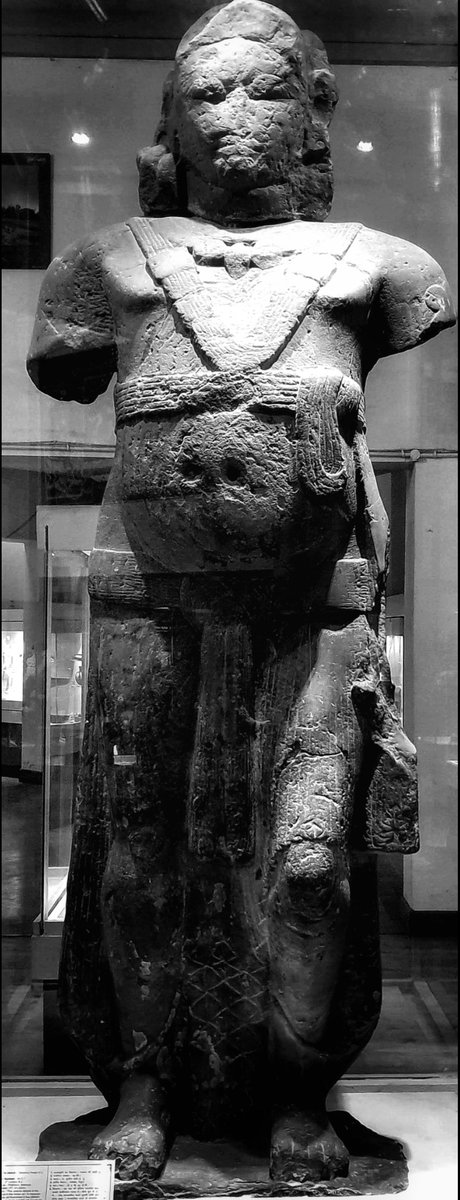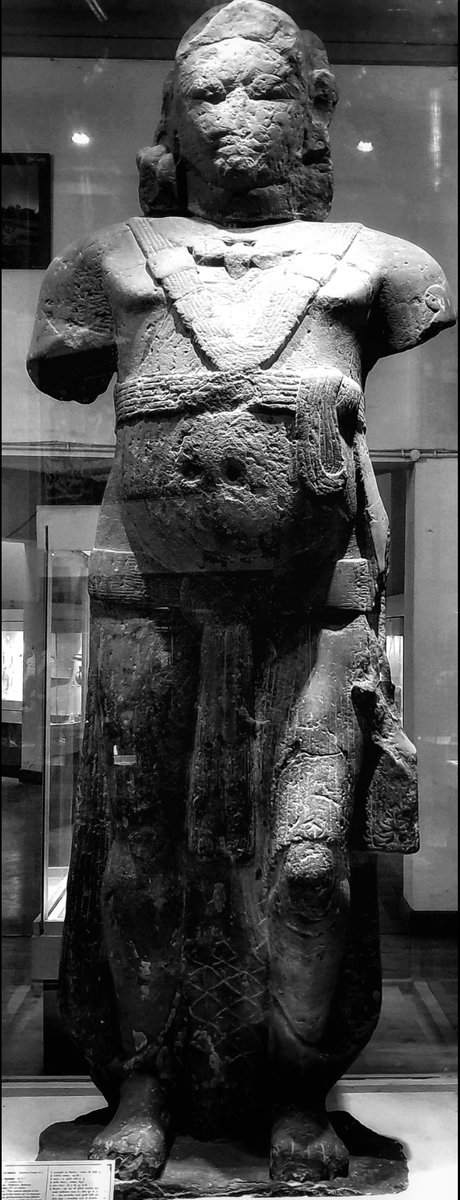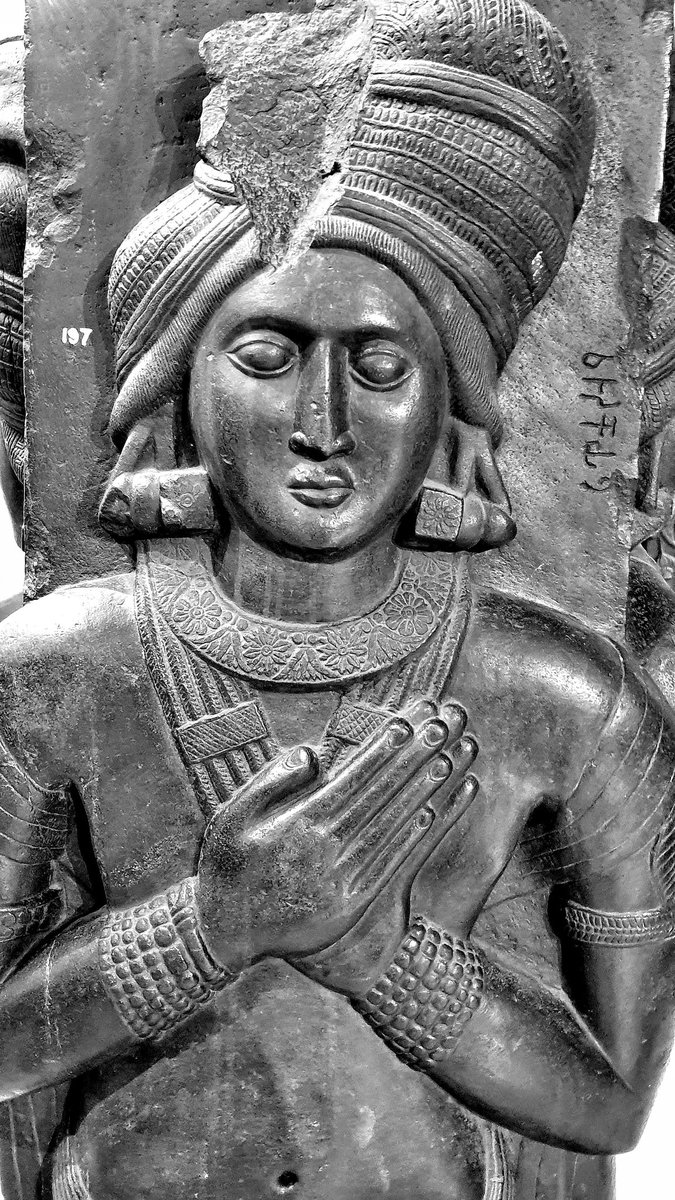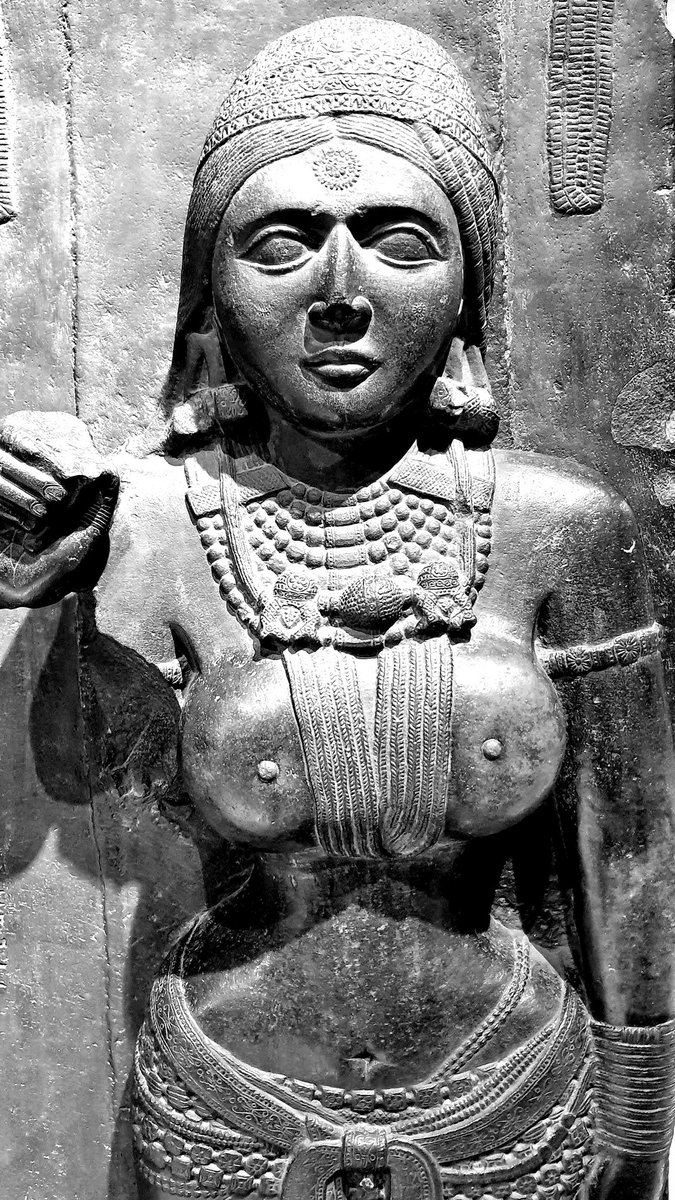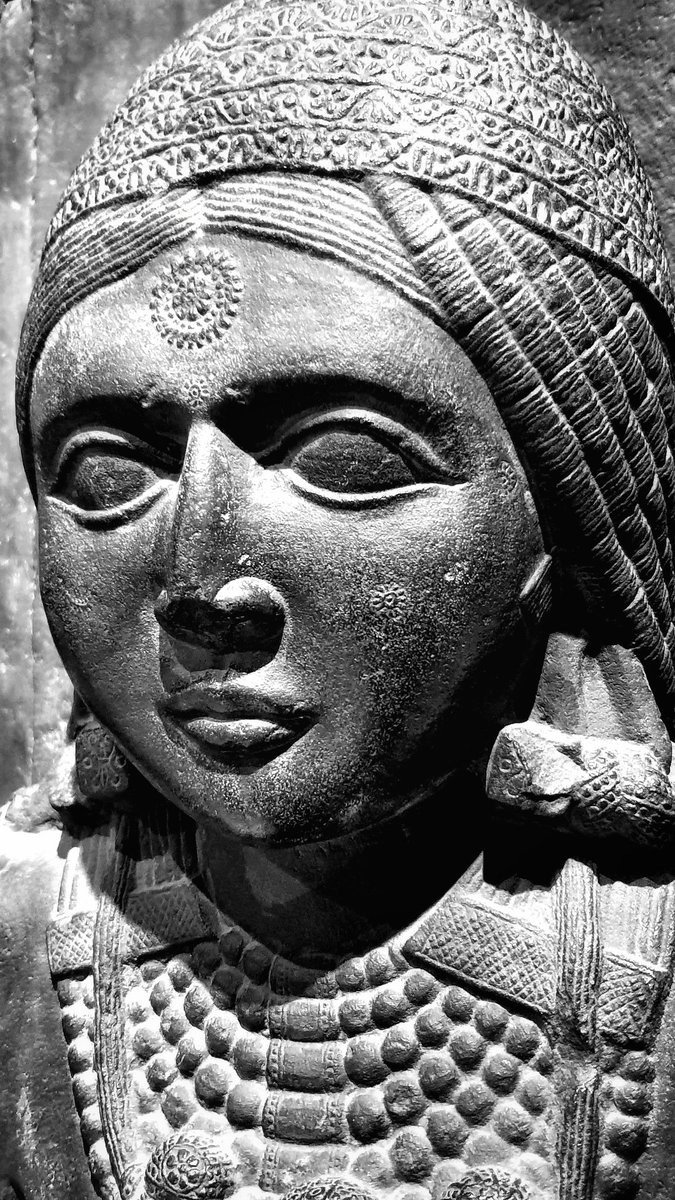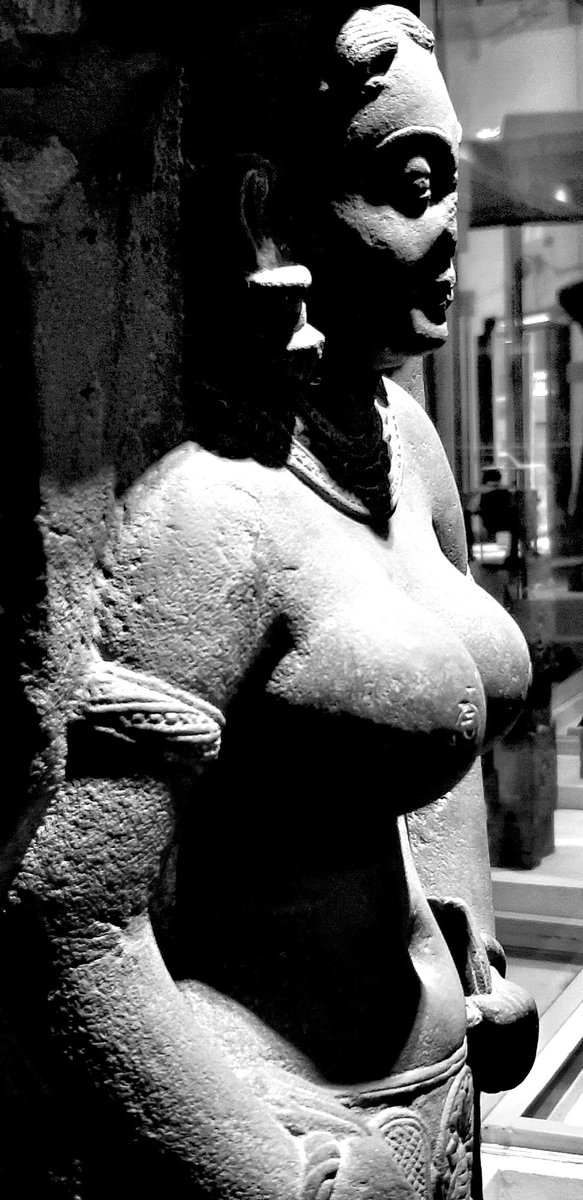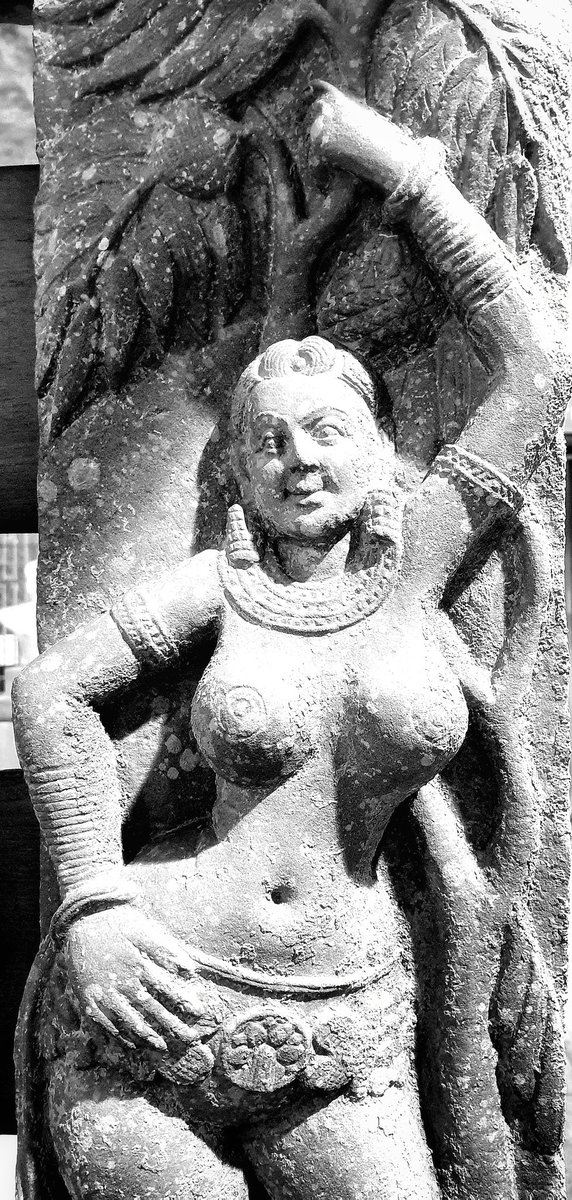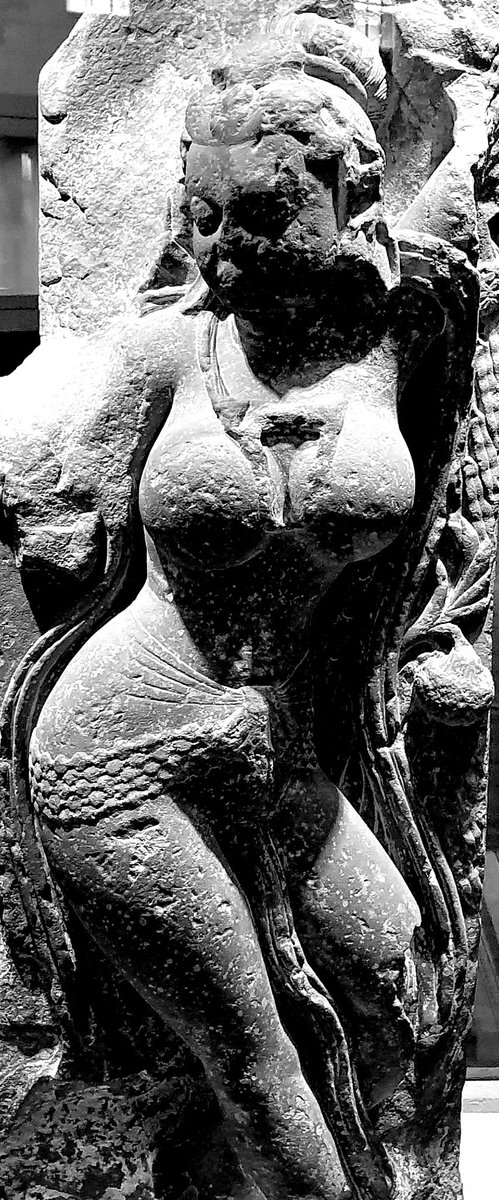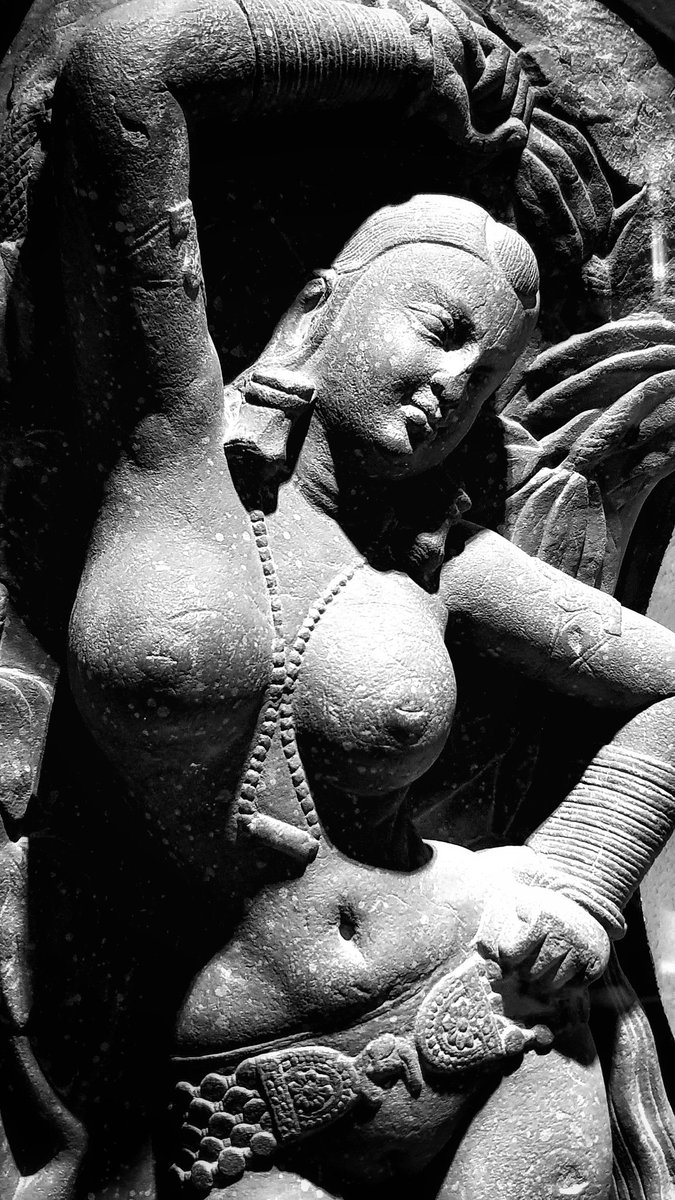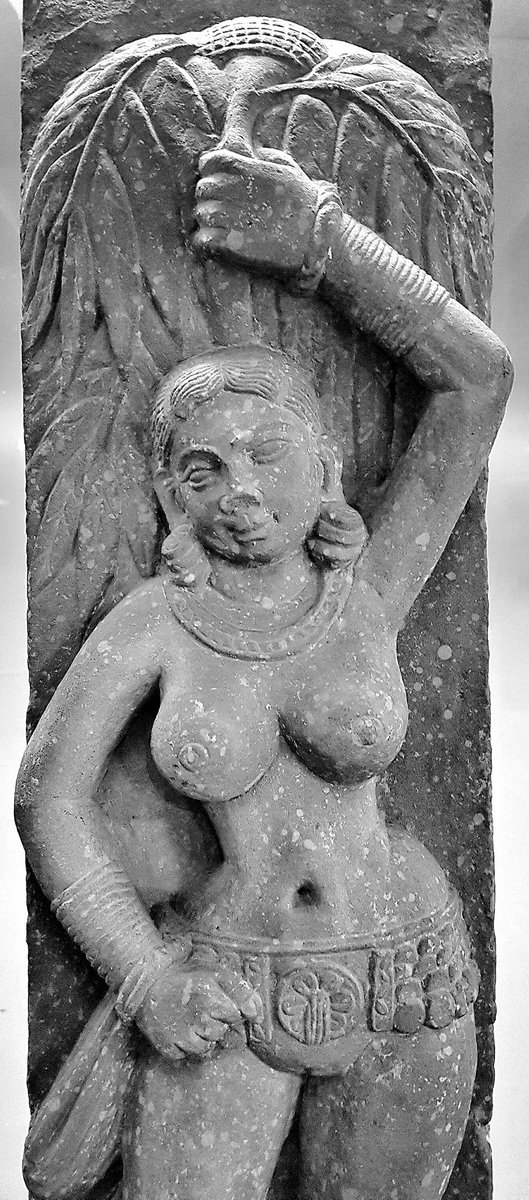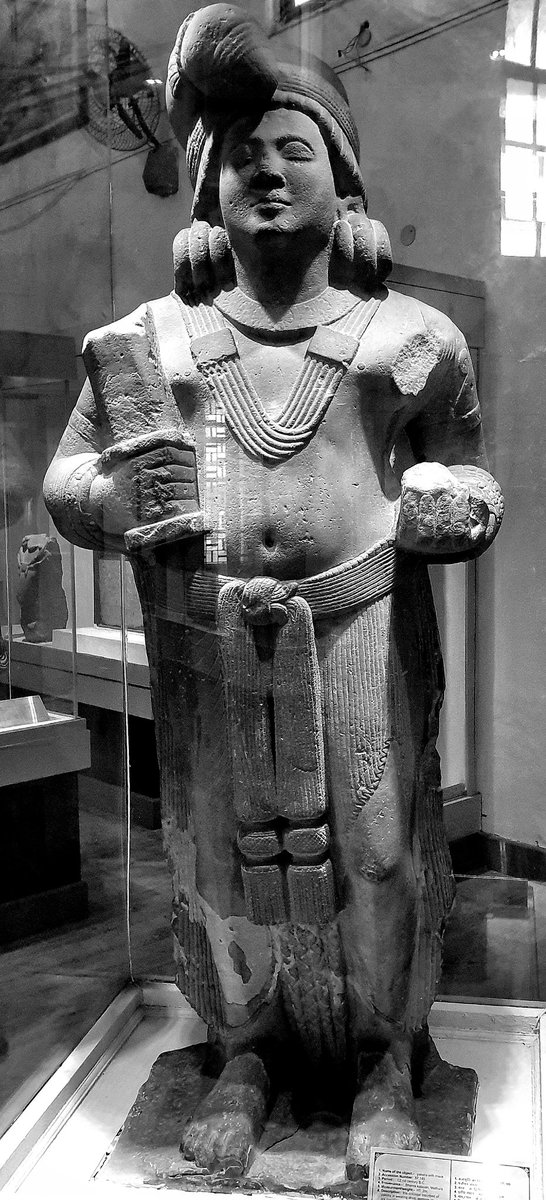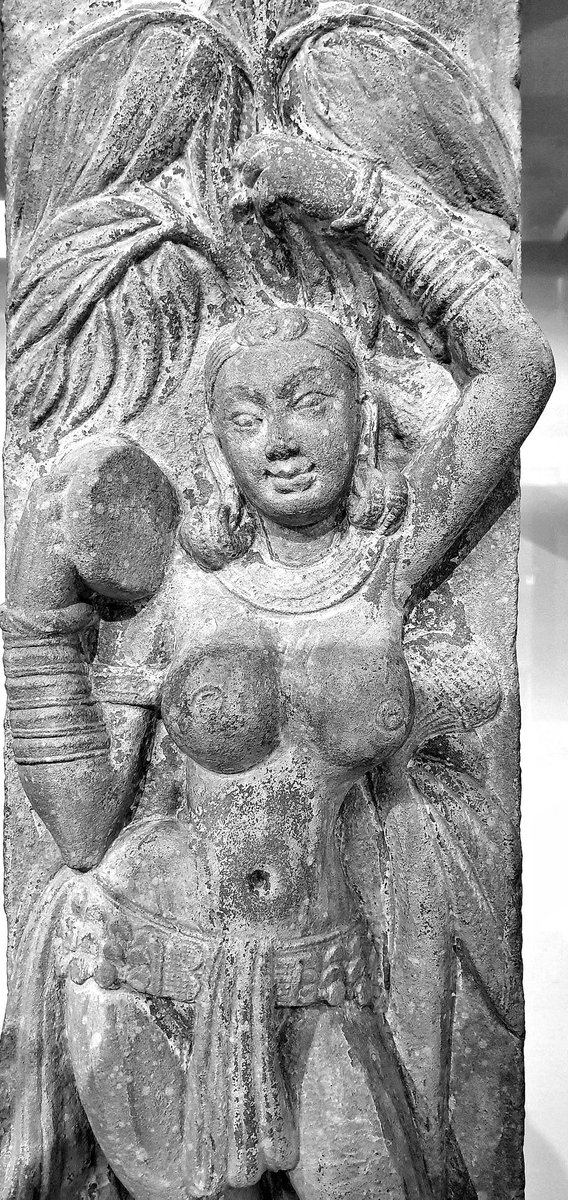I& #39;m become very interested in yakshas, yakshis and nagas- classes of sacred beings which seem to be relatively peripheral to modern Indian religion and spirituality, but which dominated much of the art of early India, whether Hindu, Buddhist or Jain.
Monumental stone sculptures of Yakshas —freestanding and carved in the round- begin to appear from the third century BCE, as witnessed spectacular yaksha from Parkham near Mathura made “in the guild of Manibhadra by Gomitaka, a pupil of Kunika."
The Parkham Yakshi (left) is said by the ASI to be the oldest free-standing statue in Indian art, c275 BCE, but the Mathura Museum contains several others that are only slightly younger, 200-100 BCE
From around the same time are the Besnagar Yaksha & Yakshi, icons of extraordinary robustness and power and the ancestor of much subsequent Indian statuary. Like those in Mathura they tall, royally attired, well-fed figures, carrying bags of coins, flasks of medicine & swords.
The Bharhut stupa, c120 BCE, is guarded by a series of nearly-life-sized named Yaksha Rajas: “tamed spirit-deities incorporated into the faith as guardians & devotees of the stupas. They stand asmarkers of the Buddhists’ success in taming & converting troublesome spirit-deities"
For each Yaksha Raja at Bharhut, there are Yakshis, standing in perfect poise, voluptuous figures with sloping shoulders, substantial breasts, narrow waists, a rounded stomach with lightly incised folds, wide hips and strong tapering thighs.
The Yakshis of Mathura are the most gorgeous, auspicious fertility figures resembling palace women in their attire and jewellery, with particular emphasis placed on hips and breasts.
The Yakshis association of fertility is often expressed through a special connection between yakshis and vegetation. It is quite common to see the female figure placed alongside trees, resting an arm across a branch or holding a piece of fruit or a flower.
Some of the most beautiful of the Mathura yakshis, the Salabhanjikas, show Ashoka trees bursting into fruit and blossom at their touch “thus symbolizing the transfer of the woman’s fertile energy to the tree.”
The beautiful, fertile body of these early Yakshis continue to permeate Indian art and thought, cutting across religious boundaries so that images of woman-and-tree are found in Buddhist, Hindu, Jain contexts, and finally, perhaps most gorgeously, in Mughal & Pahari miniatures.
Meanwhile the Yakshas (left and centre) provided the prototype and inspiration for the first monumental standing Buddha image (rignt) of the Kushan period, which significantly developed in Mathura, one of the main centres of Yaksha worship.
The best of my photographs from my travels in search of ancient India will be on show at @ArtVadehra Delhi next month and @grosvenorart London in July

 Read on Twitter
Read on Twitter


